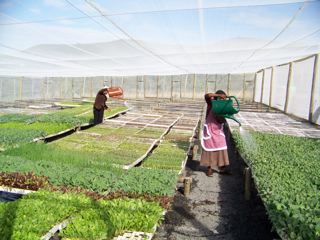
(Registered Co-op: 2008/001977/24)
Maphuzi A/A, Coffee Bay, Mqanduli, 5082
Tel: 047-575 9015, Fax: 085-532 3508
Masande Nursery was implemented by the Water Sisulu University with funding through DEAT SRPP - and building of the nursery and office buildings started in April 2007, with seedling production commencing in September 2007.
As a registered local co-op (Masande Crop Production Agricultural Cooperative) serving the Coffee Bay communities and the greater KSD district, we propagate and supply quality vegetable seedlings (spinach, cabbage, onion, butternut, cauliflower, etc.) and fruit trees to our customers at cost effective prices.
Our large production capacity, and volume discount pricing, allows us to supply local commercial farmers very competitively.